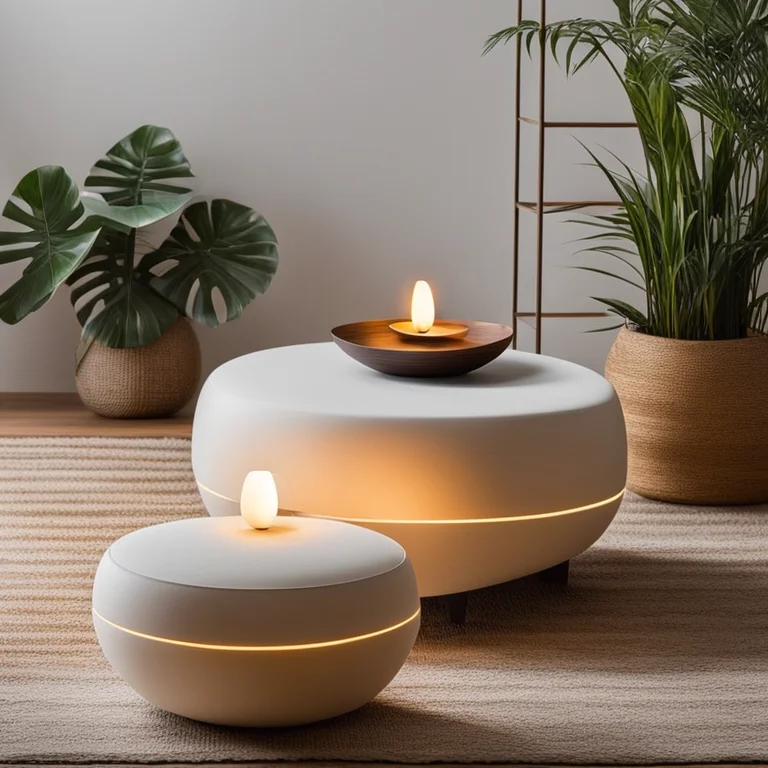
Meditation: Tips for Mindful Serenity
Discover practical meditation tips to elevate your mindfulness journey and find your inner peace in this concise guide.
article by Hina Kurosawa
Embracing the Present
As we journey into the realm of meditation, the first and foremost tip is to anchor yourself in the now. Let the past and future dissolve into the background as you focus on your current breath and being. Meditation has a myriad of styles, but most begin with present-moment awareness. Train your attention to observe thoughts without judgment, allowing them to pass like clouds on a windy day. By practicing this, you encourage a state of mindful serenity that becomes more accessible over time. Dedication to this process enhances mental clarity and emotional regulation, which are vital in our fast-paced world.

Creating Your Sanctuary
Your environment plays a critical role in the success of your meditation practice. In 2024, as we learn more about the impact of space on our well-being, seek to establish a personal sanctuary. A designated meditation space, free from clutter and distractions, sets the stage for tranquility. It doesn't require an entire room—just a peaceful corner can serve as your retreat. Introduce elements that calm the senses, like soft lighting, gentle scents, or a comfortable pillow. This sacred space will serve as a physical reminder to pause and dive inward, supporting your meditation habit.

The Role of Technology
As we embrace the digital age, technology offers tools to aid your meditation practice. Appropriate use of apps and websites that provide guided meditations, ambient soundscapes, or meditation timers can be incredibly supportive. These resources can introduce structure for beginners and variety for seasoned practitioners. However, it’s essential to use technology mindfully, ensuring it aids rather than distracts from your practice. Turn off notifications and allow your device to serve as a catalyst for stillness rather than a source of interruption.

Timing Your Sessions
Consistency is more valuable than duration when it comes to meditation. Whether it’s five minutes a day or half an hour, what matters most is daily practice. As you schedule your sessions, consider natural rhythms like sunrise or sunset, aligning your practice with the tranquil energy of these transitions. Many find that morning meditations set a peaceful tone for the day, while evening sessions can help to process and release the day’s events. Trust your intuition and life’s pace when timing your practice, remembering that regularity breeds depth.

The Power of Posture
In recent years, we've seen an increased appreciation for the link between body and mind. This extends to meditation, where posture plays a pivotal role. Ensure that you are comfortable yet alert, whether seated on a chair, cushion, or mat. Spinal alignment is critical—the back should be straight, with shoulders relaxed. Your head should be level, with your chin slightly tucked. This posture facilitates the flow of energy and maintains focus. Experiment with various positions to find what feels most supportive for your body’s needs.
Meditation and Breathwork
Breath is the bridge between the body and the mind, and it's at the heart of many meditation techniques. Diaphragmatic breathing, or deep belly breathing, can profoundly impact your state of calm. By intentionally regulating your breath, you can navigate stressful emotions and develop resilience against anxiety. As newer research in 2024 highlights the health benefits of regulated breathing—such as lowered blood pressure and improved concentration—don't overlook this simple yet powerful aspect of your meditation practice.
Published: 1/9/2024
Modified: 1/9/2024
More predictions
Come back here soon to learn more about yourself and your future


Serenity Through Meditation Retreats
Embark on a transformative journey at a meditation retreat to recharge, refocus, and reconnect with your inner self.


Mindful Rest: Integrating Meditation & Sleep for Well-being
Discover the synergy of meditation and sleep in enhancing mental, emotional, and physical health. This article delves into practices that combine these powerful restoration tools.


The Serene Path: A Guide to Meditation Retreats
Discover the transformative journey of meditation retreats and how they can enhance your spiritual practice in a serene environment.